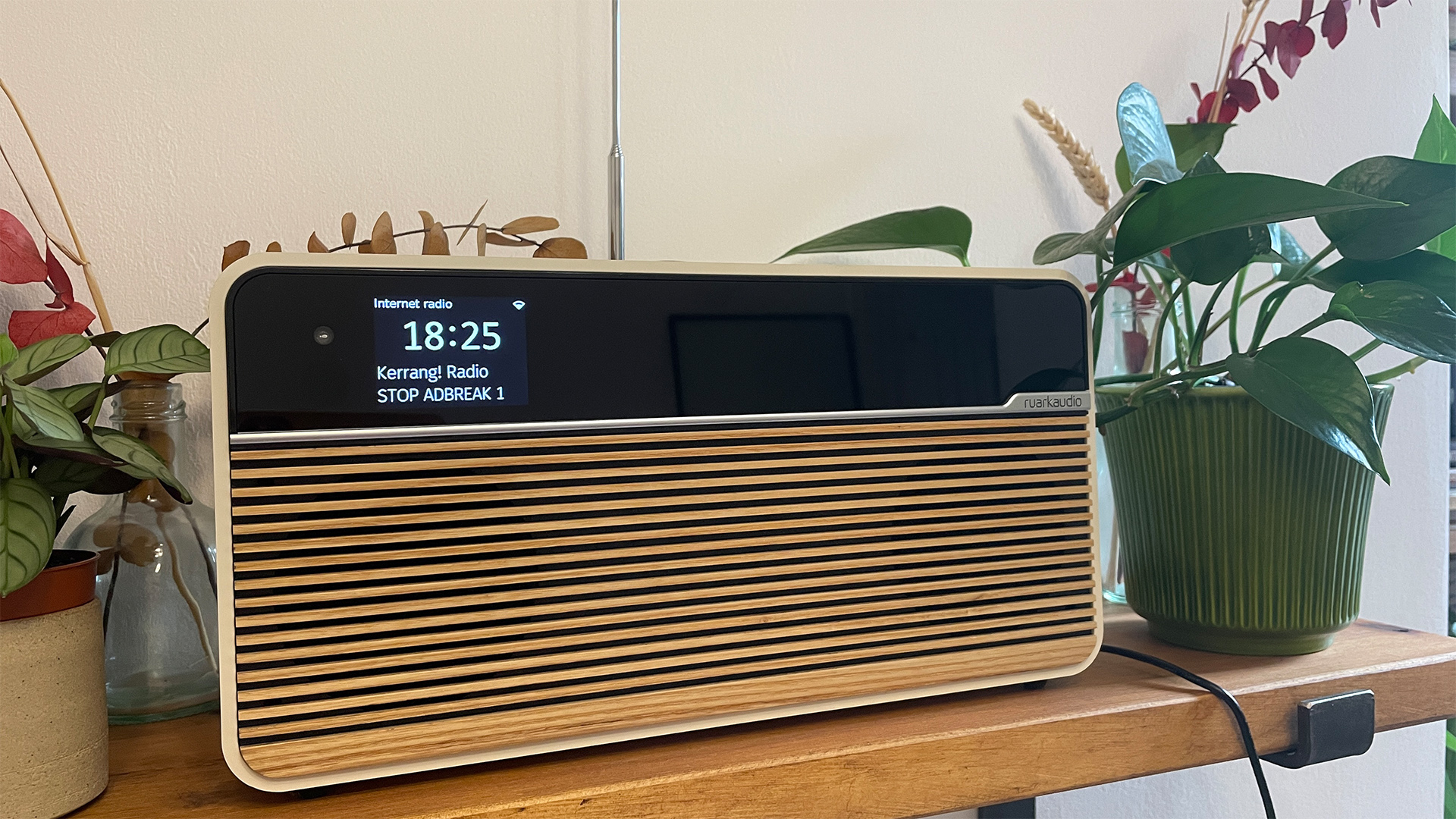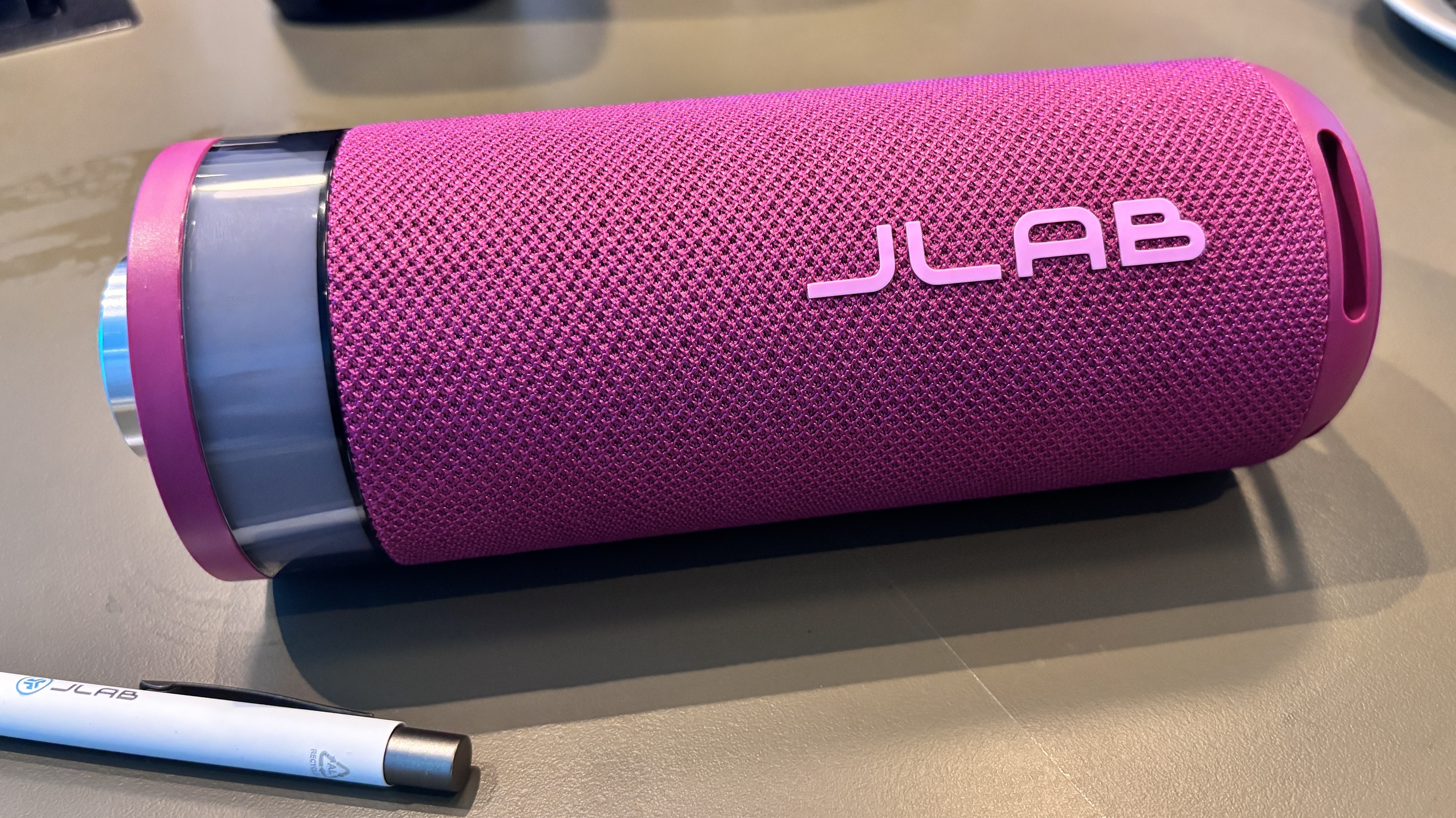Ruark Audio on an imminent return to its hi-fi roots and the value of tactile design
The music system maestro has a big year ahead of it

To the misfortune of misshaped vegetables and runts of puppy litters, Ruark Audio founder Alan O’Rourke is probably right in saying that we buy with our eyes and that isn't going to change anytime soon. Anyone who has laid eyes on a Ruark Audio music system would very reasonably describe it as they would Barcelona’s Sagrada Familia: an utterly eye-catching work of art. It’s why O’Rourke often spots them in the background of TV dramas, as props for modern bedrooms or kitchens, and why they have been labelled, both in-house and out, exemplars of ‘design-led audio’ and, by us, “great-sounding pieces of furniture”. It is a significant contributor to their critical acclaim and undoubtedly too their business success.
Founded in 1985, the British brand is seeing in its 40th year off the back of the launch of its sophisticated 100 Series audio systems, and plans to keep the momentum strong in the coming months with none other than a surprise return to its mid-’80s product roots!
We sat down with O’Rourke and, very briefly, his dog Ozzie (yes, after Ozzy Osbourne) to talk about the past, present and future of all-in-ones, as well as the sector of the systems market it hopes to crack next…
From speakers to systems, via surrounds
For the uninitiated, Ruark Audio makes a handful of all-in-one audio systems that vary in size between a kettle and an AV rack and have either Bluetooth and DAB (R1), network streaming and internet radio (R1S, R2, R410, R810), or all of the above plus a CD player (R3S). Generations of these single-box radio systems have represented the pinnacle of their kind over the past two decades, but if a hi-fi enthusiast came out of 20 years of hiding today they may well be confused about the brand's identity today. Because its roots were planted in another corner of the hi-fi market entirely.
It all started in the early ’80s with O’Rourke and his father Brian, he recalls.
“My dad worked in the furniture industry, and with a lot of the pioneers of the early British hi-fi industry, making cabinets for them,” he says. “He had a really good time when he worked for a company called Dallas Arbiter, who at the time imported Fender Guitars and JBL speaker systems.
“When I was a kid, he would bring speaker boxes home and we would make speakers together. I just grew up surrounded by music – that was our little hobby and passion together – and I loved what he did. I used to go to work with him on a Saturday and was totally engrossed with it. So we started making speakers as a hobby, and I trained as an engineer.
The latest hi-fi, home cinema and tech news, reviews, buying advice and deals, direct to your inbox.
“Someone said that they were really good and suggested we do it ourselves. So we did. He left his job, I was an engineer for MNK at the time, and we made the Sabre, the Broadsword and the [higher-end] Accolade.”

The dad and son duo used their savings to rent a small space in Rayleigh, Essex as a workshop to manufacture those first loudspeaker systems, which saw the brand build a solid reputation alongside the established likes of KEF and Bowers & Wilkins. What Hi-Fi? called the Sabre “an outstanding loudspeaker that can stand muster in the company of many far more expensive loudspeaker systems”.
Within a few years, the company had a good dealer network in the UK, with export starting to grow to the Far East. The ’90s gave birth to several other acclaimed speakers including the brand-defining Talisman, evolutionary Crusader and reference studio monitor Equinox, and saw the company move to the factory they still reside in today in Southend-on-Sea. But then as the millennium approached and just before Brian retired aged 70, the brand branched out. “You saw the focus move from stereo to surround sound and home theatre systems,” O’Rourke recalls. “So we made some!”
“We did particularly well with a speaker package called the Vita 100 Series – five small speakers with a centre channel and subwoofer, costing about £1500. And that made us realise that people wanted compactness; things they could easily house in their home. What we didn't realise was the time and effort they would take us [its 20-ish-strong team] to make and assemble here. It was quite the effort compared to building a pair of speakers!” O’Rourke says that a 42-inch plasma TV became the pinnacle of home entertainment – “the cool thing to have” – and that sound started to take a backseat unless you had loads of money and could own a mega AV system. And so the direction changed…

“When I was seeing one of our distributors in the Netherlands, I came across the Tivoli Model One and thought, ‘Now that is a really nice little product.’ It looked and sounded great. I brought it back to show Neil [Adams – Ruark's operations director today and O’Rourke’s brother-in-law] and said, ‘We should do this.’
So alongside speaker operations, Ruark Audio also became the distributor of Tivoli Audio. “Tivoli was quite unique when it hit the market”, says O’Rourke. “We hit the floor running and got loads of interest not only from the usual hi-fi media but also the lifestyle media. And John Lewis loved it; it was perfect for their customer. Doing the Model One for a few years opened our eyes to the market.”
But DAB took off in the UK, with the BBC promoting it and Pure introducing its Evoke-1 DAB radio. “Talk about running into a brick wall!” says O’Rourke. “Suddenly, it became an uphill battle. John Lewis was promoting DAB products over Christmas and people would come up to the Tivoli and say, ‘I love that, is it digital?’ And you would say, ‘Well, no it's not… but it sounds much better.’ It was a bit like when CD first came along and you tried to tell people that LP still sounded better!

“The rest of Europe was miles behind [regarding DAB] and we couldn't convince Tivoli – an American company – that they needed to support us in producing a DAB product. That's really what inspired us to do it ourselves. We started the first R1 in 2004 and launched it in 2006. And the rest is history.
“The initial idea was to keep the speakers going too, but you could say we got carried along down the path of least resistance. And so we wound the speaker side down to concentrate on the small audio. It was time.”
Coming (nearly) full circle
And this is where the storyline starts curving around to form a circle, because later this year Ruark Audio plans to launch a product that harks back to its origins as a manufacturer of passive speakers. “We know it has to be good because they’ll always be referred back to where we used to be!” says O’Rourke.
Will it be a proper passive speaker market homecoming? Unlikely. O’Rourke understandably wants to keep the upcoming product a surprise until it’s ready, but he did hint that the speakers would tie into the classic Ruark system we’ve come to know and love over the past 20 years. “You could say it'll be a bit like what happened in the '70s when it went from one box to stereo systems,” he teases.
We’re guessing it’ll be speakers designed to sit on either side of a streaming component of sorts, though the only thing we can be sure of at this stage is that it’ll be a looker!

So why not go down the all-in-one path KEF and now other manufacturers are treading by offering a whole system inside two stereo speaker cabinets? Ruark has its compact MR1 stereo speaker system with Bluetooth (not network streaming), which is a seven-time What Hi-Fi? Award winner and, O’Rourke says, a consistent seller all year round. The company is about to start working on the next generation; talk about having big shoes to fill. But O’Rourke says that full streaming active speakers don’t really appeal to the company at the moment, and that probably has something to do with the importance it places on the inherently tactile nature of a tabletop system.
“Apart from the MR1, our products all have one thing that we were very keen on from the beginning – a screen to communicate what's being played. And from the first R1, we had what we call our RotoDial control, which has improved over the years and features too on the 100 Series [as does a RotoDial-mirroring handheld remote].
“I like the tactility you have from turning a knob or clicking a button. It’s got to feel right, and it gives you that [physical] connection. I've got a touchscreen in my car, but it feels a bit dead, so I tend to use the controls on the steering wheel. It’s nice to have that interaction outside of the phone.”
O’Rourke makes a fair point, too, that, as phones do touchscreens superbly well, nothing less than the same level of responsiveness that is offered on Apple and Samsung handsets would do.
Haptic (kinesthetic) technology designed to mimic the sense of touch may well be how we interact with a lot of future technology, but there has of late been a retaliating desire for physical technological experiences again, as is somewhat evident in the resurgence of vinyl and the seemingly fashionable desire for ‘classic’ or ‘retro’ aesthetics in not only hi-fi and consumer technology but cars and fashion too.

Again, for O’Rourke, it all comes back to this ‘design-led audio’ label: “When we started I always said that we make products for ourselves as much as anything else; products that we would like to own. The fact that people seem to really like and enjoy them is a bonus for us!
“I think technology is starting to slow down a bit, which is why it’s more important than ever that products look good and sound good. That they catch the eye.” It’s why for the 100 Series Ruark decided to snub the textured cloth found on its other systems and, increasingly, rival products for the wooden grille design – “something a little bit harder for people to replicate!” he admits.
Desire for simplicity
But while design and sound quality are very much in Ruark’s hands, the streaming ecosystem is invariably less so. “Making speakers was far easier!” O’Rourke says after revealing the company’s struggles to ensure its products conform to different countries' various wi-fi bands and certifications in order to be sold there. He praises the simplicity and universal support of Bluetooth and, presumably like many of us, longs for a network platform with the same ubiquity.
“Internet radio is fantastic,” he says. “Spotify Connect is great, it just works. So I think if more people could have that – if, say, BBC Sounds had a ‘Connect’ service – it would be a better solution than Bluetooth.
“I think people are still getting their heads around features like AirPlay and Chromecast. [With them], we can support nearly every music streaming service out there… though China’s QQ Music supports AirPlay but not Cast. It would be great if we had one wi-fi system like Bluetooth.”
Wouldn’t it just? Whatever streaming platforms reign in the future, O’Rourke believes the all-in-one is here to stay, as is Ruark Audio’s loyalty to it. “I’m 66 this year and I don't want this to stop!” he says. “It is – and always was – a passion for us. We are one of the few companies that are still family-owned and British, and feel quite proud that we're still doing it ourselves. I read something really nice the other day: if you do something you enjoy you'll never work a day in your life. And that sums us up really.”
MORE:
Speaker systems are in danger of killing budget hi-fi separates, but they shouldn't
Our expert pick of the best hi-fi systems 2024: CD, vinyl and streaming music systems for the home
Ruark’s first subwoofer set to boost our favourite desktop speakers' sound
Becky is the managing editor of What Hi-Fi? and, since her recent move to Melbourne, also the editor of the brand's sister magazines Down Under – Australian Hi-Fi and Audio Esoterica. During her 11+ years in the hi-fi industry, she has reviewed all manner of audio gear, from budget amplifiers to high-end speakers, and particularly specialises in headphones and head-fi devices. In her spare time, Becky can often be found running, watching Liverpool FC and horror movies, and hunting for gluten-free cake.

